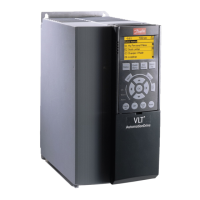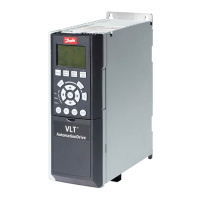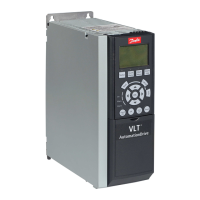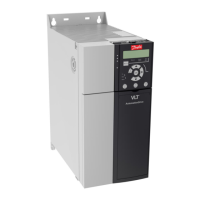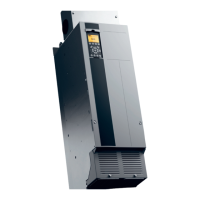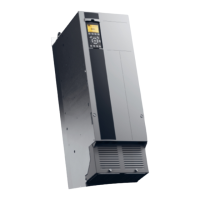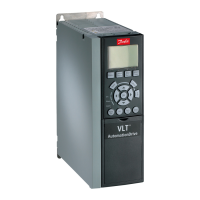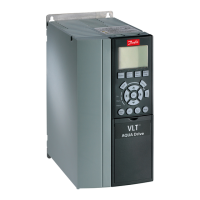Cable
length [m]
Mains
voltage
[V]
Rise time
[μs]
Upeak
[kV]
du/dt
[kV/μs]
5 480 0.371 1.170 2.523
Table 4.32 P55KT5
Cable
length [m]
Mains
voltage
[V]
Rise time
[μs]
Upeak
[kV]
du/dt
[kV/μs]
5 480 0.371 1.170 2.523
Table 4.33 P75KT5
4.3 Efficiency
Efficiency of the frequency converter
The load on the frequency converter has little effect on its
efficiency. In general, the efficiency is the same as the
rated motor frequency f
M,N
, if the motor is supplying 100%
of the rated shaft torque or less, such as in case of part
loads.
This also means that the converter efficiency does not
change when other U/f characteristics are chosen.
However, the U/f characteristics do influence the efficiency
of the motor.
The efficiency declines a little when the switching
frequency is set to a value of above 5 kHz. The efficiency is
also slightly reduced when the mains voltage is 480 V, or
the motor cable is longer than 30 m.
Efficiency calculation
Calculate the efficiency of the frequency converter at
different loads based on Illustration 4.2. Multiply the factor
in this graph with the specific efficiency factor listed in
4.2 General Specifications.
Illustration 4.2 Typical Efficiency Curves
Example: Assume a 55 kW, 380-480 V AC converter with
25% load at 50% speed. The graph is showing 0.97 rated
efficiency for a 55 kW converter is 0.98. The actual
efficiency is then: 0.97 x 0.98=0.95.
Efficiency of the motor
The efficiency of a motor connected to the converter
depends on magnetizing level. In general, the efficiency
equals the mains. The efficiency of the motor depends on
the type of motor.
•
In the range of 75-100% of the rated torque, the
efficiency of the motor is practically constant,
both when it is controlled by the frequency
converter and when it runs directly on mains
•
The influence from the U/f characteristic on small
motors is marginal. However, in motors from 11
kW and up, the efficiency advantage is significant.
•
The switching frequency does not affect the
efficiency of small motors. Motors from 11 kW
and up have their efficiency improved 1-2%. This
is because the sine shape of the motor current is
almost perfect at high switching frequency.
Efficiency of the system
To calculate the system efficiency, the efficiency of the
converter is multiplied by the efficiency of the motor.
4.4
Acoustic noise
Acoustic noise from the frequency converter comes from
three sources
•
DC link (intermediate circuit) coils
•
RFI filter choke
•
Internal fans
See Table 4.34 for acoustic noise ratings.
Frame size
50% fan speed
[dBA]
Full fan speed
[dBA]
A1 51 60
A2 51 60
A3 51 60
A5 54 63
B1 61 67
B2 58 70
C1 52 62
C2 55 65
C4 56 71
Table 4.34 Acoustic Noise Ratings
Values are measured 1 m from the unit.
FC 300 Selection
VLT
®
AutomationDrive FC 300 Design Guide, 0.25-75 kW
78 MG33BE02 - VLT
®
is a registered Danfoss trademark
44
http://www.RSPSupply.com/p-21462-Danfoss-131B8966-VLT-Automation-VT-Drive-VFD-FC301-230V-5-HP.aspx

